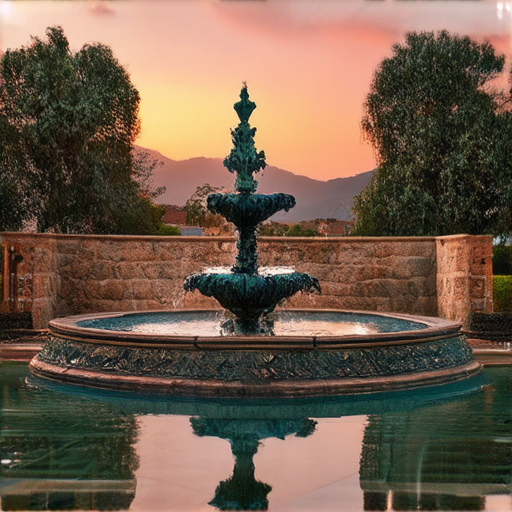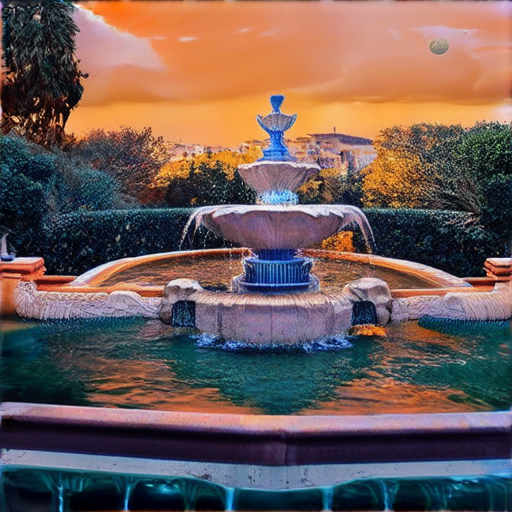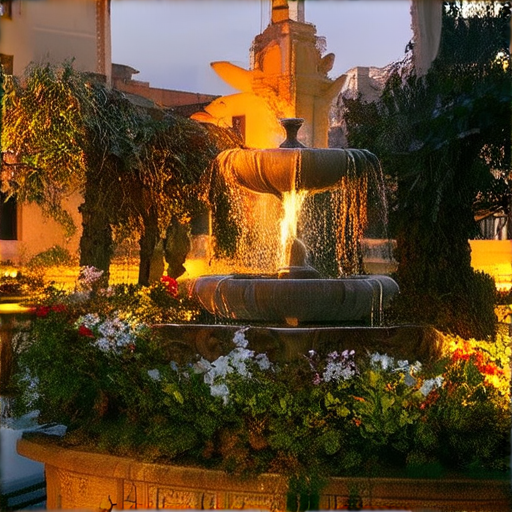Located in the heart of central Mexico, Querétaro is a city rich in history and culture, boasting numerous historical landmarks that showcase its architectural treasures. As a popular tourist destination, Querétaro attracts visitors from around the world who come to marvel at its well-preserved colonial-era buildings, vibrant arts scene, and stunning natural surroundings. With its unique blend of indigenous, Spanish, and Mexican influences, Querétaro offers a fascinating glimpse into Mexico’s complex past, making it an essential stop for anyone interested in exploring the country’s architectural heritage.
From the 16th-century city walls to the modern-day museums and galleries, Querétaro’s historical landmarks are a testament to the city’s enduring legacy. Whether you’re a history buff, an architecture enthusiast, or simply looking for a unique travel experience, Querétaro has something to offer everyone. In this guide, we’ll delve into the city’s most famous historical landmarks, explore its cultural significance, and provide insider tips on how to plan your trip to this incredible destination.

New Mexico’s Rich Historical Heritage
-
1. Carlsbad Caverns National Park
-
2. Pueblo de Taos
-
3. El Camino Real de Tierra Adentro
-
4. Palace of the Governors
-
5. Chaco Culture National Historical Park
Established in 1930, this stunning underground cave system showcases breathtaking limestone formations and unique geological features.
This historic adobe village, dating back to the 17th century, offers a glimpse into the lives of the Tiwa people and their rich cultural heritage.
A UNESCO World Heritage Site, this ancient Spanish trail spans over 900 miles, connecting present-day New Mexico to Santa Fe, marking a pivotal moment in the region’s history.
Completed in 1610, this adobe building serves as the oldest continuously occupied public building in the United States, housing various museums and offering insight into the state’s colonial past.
Dating back to the 9th century, this archaeological site preserves the remnants of the Ancestral Puebloan civilization, featuring intricate stone structures and mysterious astronomical alignments.
Why is Querétaro Famous?
Querétaro, a city located in central Mexico, has a rich history and cultural significance that makes it famous among tourists and locals alike. Here are some key reasons why Querétaro stands out:
- Franciscan Missionary Work: Querétaro played a significant role in the Franciscan missionary work in North America during the 16th century. The city served as a base for missionaries who worked tirelessly to spread Christianity and educate indigenous communities.
- Historic Center: Querétaro’s historic center is a UNESCO World Heritage Site, featuring beautiful colonial architecture, picturesque plazas, and impressive churches. Visitors can explore the city’s rich history and culture by walking through its cobblestone streets.
- Uprising Against Spanish Rule: In 1810, Querétaro was the site of a pivotal event in Mexican history – the uprising against Spanish rule led by Miguel Hidalgo y Costilla. This courageous act marked the beginning of Mexico’s struggle for independence.
- Cultural Events and Festivals: Querétaro hosts various cultural events and festivals throughout the year, showcasing its vibrant arts scene. The city’s annual Fiestas de la Vendimia (Grape Harvest Festival) is a popular attraction, celebrating the region’s wine production.
- Education and Research: Querétaro is home to several prestigious institutions, including the University of Querétaro and the Instituto Politécnico Nacional (IPN). These educational institutions contribute to the city’s reputation as a hub for learning and innovation.
By exploring these aspects of Querétaro’s history, culture, and education, visitors can gain a deeper understanding of this fascinating city and appreciate its unique charm. Whether you’re interested in history, culture, or simply want to experience the warmth of Mexican hospitality, Querétaro is a destination that offers something for everyone.
The Most Historical Place in Mexico
The rich cultural heritage of Mexico is evident in its numerous historical sites, each offering a unique glimpse into the country’s fascinating past. Among these, one location stands out for its exceptional historical significance and enduring impact on Mexican society.
Teotihuacán: A City of Ancient Wonders
Located just outside modern-day Mexico City, Teotihuacán is an archaeological site that boasts some of the most impressive ancient structures in Mesoamerica. Dating back over 1,800 years, this city was once home to a sophisticated civilization known for its advanced knowledge of astronomy, mathematics, and engineering.
- Pyramid of the Sun: The largest pyramid in the world, standing at an astonishing 216 feet tall.
- Pyramid of the Moon: A smaller yet equally impressive pyramid, featuring intricate carvings and mysterious symbols.
- The Avenue of the Dead: A well-preserved street lined with temples, palaces, and other important buildings.
Tulum National Park: A Mayan Ruin on the Caribbean Coast
Perched atop a cliff overlooking the turquoise waters of the Caribbean Sea, Tulum National Park is a breathtaking example of Mayan architecture. Built in the 13th century, this walled city was strategically located to protect its inhabitants from invaders and pirates.
- The Temple of the Frescoes: A stunning temple adorned with vibrant murals depicting scenes from Mayan mythology.
- The Castle: A fortified structure built to safeguard the city from external threats.
- The Beach: A picturesque stretch of sand where visitors can relax and enjoy the ocean views.
Chichén Itzá: A Sacred Center of the Maya
One of the most famous Mayan ruins in Mexico, Chichén Itzá is a must-visit destination for anyone interested in history and culture. This sacred center was built around the 10th century and features several iconic landmarks, including the Pyramid of Kukulkan.
- The Pyramid of Kukulkan: A majestic structure dedicated to the feathered serpent god, featuring a unique design that creates a shadow in the shape of a serpent during the spring and fall equinoxes.
- The Ball Court: A large, circular court where the Maya played a game called Tlachtli, which was considered a sacred ritual.
- The Temple of Warriors: A grand structure adorned with intricate carvings and sculptures depicting Mayan warriors.
Palenque National Park: A Hidden Gem in the Jungle
Deep within the dense jungle of Chiapas, Palenque National Park is a lesser-known but no less impressive archaeological site. This ancient Mayan city dates back to the 7th century and features several stunning structures, including the Temple of the Inscriptions.
- The Temple of the Inscriptions: A magnificent structure containing the tomb of the Mayan king Pakal, adorned with intricate carvings and hieroglyphics.
- The Palace: A grand structure featuring several courtyards and ornate decorations.
- The Observatory: A unique structure built to track celestial movements and predict astronomical events.
These historical places in Mexico offer a glimpse into the country’s rich cultural heritage and provide a wealth of information for those interested in history, archaeology, and anthropology. By visiting these sites, travelers can gain a deeper understanding of Mexico’s complex past and appreciate the beauty and significance of its many historical landmarks.
Architectural Attractions of Quertaro
Historic Significance of the Aqueduct
The Aqueduct of Quertaro is a remarkable feat of engineering that showcases the city’s rich history and architectural heritage. Completed in 1735, this monumental structure played a vital role in supplying water to the state capital for centuries, making it one of the most iconic landmarks in Quertaro.
- The Aqueduct measures approximately 1,280 meters in length and features an astonishing 74 stone arches, each carefully crafted to support the weight of the structure.
- Its maximum height reaches an impressive 2,842 meters, demonstrating the ingenuity and skill of the engineers who designed and built this marvel of engineering.
- The Aqueduct’s construction was a testament to the advanced engineering techniques of its time, utilizing stone and mortar to create a durable and long-lasting structure that has stood the test of time.
Other Architectural Attractions in Quertaro
While the Aqueduct is undoubtedly the most famous attraction in Quertaro, the city boasts a wealth of other architectural treasures worth exploring.
- The Cathedral of Quertaro, a stunning example of Baroque architecture, features intricate stone carvings and ornate details that reflect the city’s rich cultural heritage.
- The Government Palace, a grandiose building that serves as the seat of local government, showcases a mix of colonial and neoclassical styles that demonstrate Quertaro’s complex architectural evolution.
- The historic center of Quertaro, a UNESCO World Heritage Site, is filled with picturesque streets, charming plazas, and beautifully restored colonial-era buildings that evoke a sense of nostalgia and charm.
Conclusion
Quertaro’s architectural attractions offer a fascinating glimpse into the city’s rich history and cultural diversity. From the majestic Aqueduct to the charming historic center, there is no shortage of breathtaking structures to explore and discover in this captivating Mexican city.
The Most Famous Peruvian Architecture
Peru boasts a rich architectural heritage, reflecting its diverse cultural influences and historical periods. From ancient Inca ruins to colonial-era churches, the country’s buildings showcase a unique blend of styles and techniques. Here are some of the most notable examples:
- Inca Ruins of Machu Picchu: A UNESCO World Heritage Site, these majestic stone structures were built in the 15th century and represent the pinnacle of Inca engineering and architecture.
- Cusco Cathedral: Constructed between 1559 and 1650, this stunning cathedral combines Gothic, Renaissance, and Baroque styles, featuring intricate stone carvings and ornate decorations.
- Plaza de Armas in Lima: The heart of Lima’s historic center, this vibrant square features a mix of colonial-era buildings, including the Government Palace, the Cathedral of Lima, and the Church of the Society of Jesus.
- Chan Chan Archaeological Site: Built by the Chimú civilization around 900 AD, this vast adobe city is one of the largest mud-brick structures in the world and showcases the advanced engineering skills of the pre-Columbian people.
- San Francisco Monastery in Cuzco: Dating back to the 16th century, this monastery features impressive stone carvings, ornate cloisters, and a stunning chapel with intricate woodwork.
These iconic buildings not only reflect Peru’s rich history and culture but also demonstrate the country’s ability to seamlessly integrate different architectural styles and traditions. By exploring these famous Peruvian landmarks, visitors can gain a deeper understanding of the nation’s complex past and appreciate the beauty and diversity of its architecture.
Interesting Facts About Querétaro
- Querétaro is located in the central part of Mexico, covering an area of approximately 5,800 square kilometers.
- The city of Querétaro is situated at an altitude of over 1,900 meters above sea level, earning it the nickname “La Ciudad de las Rosas” (The City of Roses) due to its beautiful rose gardens and floral displays.
- Querétaro has a rich cultural heritage, with evidence of human habitation dating back to the Toltec civilization between AD 900 and 1200, making it one of the oldest continuously inhabited cities in Mexico.
Located in the state of Querétaro, this Mexican city boasts a unique blend of colonial architecture, vibrant cultural events, and stunning natural scenery.
Colonial Architecture and History
The historic center of Querétaro features numerous examples of colonial-era buildings, including the iconic Cathedral of Querétaro, which dates back to the 17th century.
The city’s rich history is also reflected in its many museums, galleries, and cultural institutions, showcasing the art, literature, and traditions of the region.
Cultural Events and Festivals
Throughout the year, Querétaro hosts various festivals and events celebrating its cultural heritage, including the Fiesta de la Vendimia (Grape Harvest Festival), the Fiesta de San Juan (St. John’s Festival), and the Fiesta de la Cruz (Festival of the Cross).
These events showcase the city’s vibrant arts scene, delicious local cuisine, and warm hospitality.
Nature and Tourism
Querétaro is surrounded by picturesque countryside, offering opportunities for hiking, horseback riding, and exploring the region’s natural beauty.
Visitors can also explore the nearby Sierra Gorda Biosphere Reserve, a protected area known for its diverse flora and fauna, as well as its traditional indigenous communities.

0 Comments